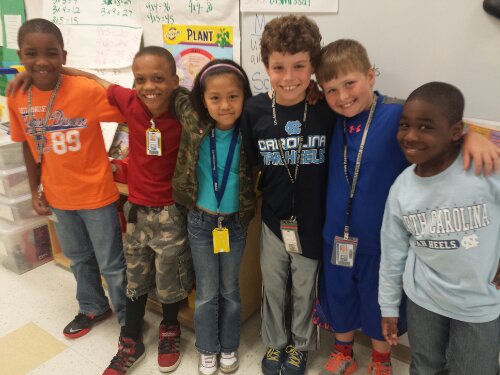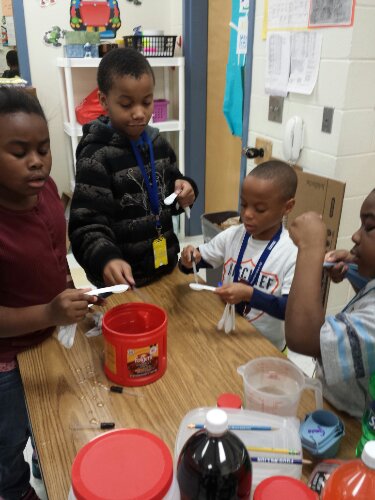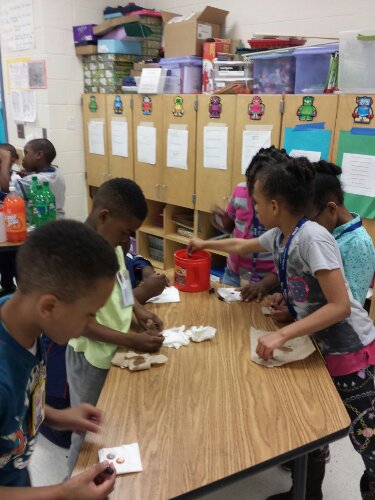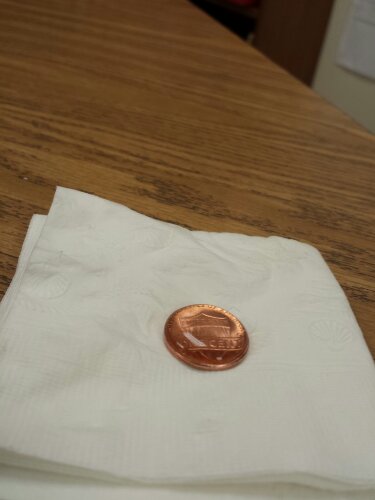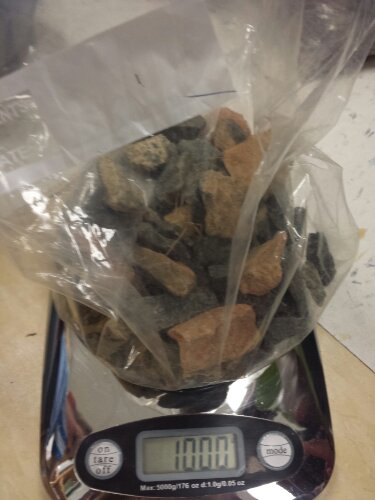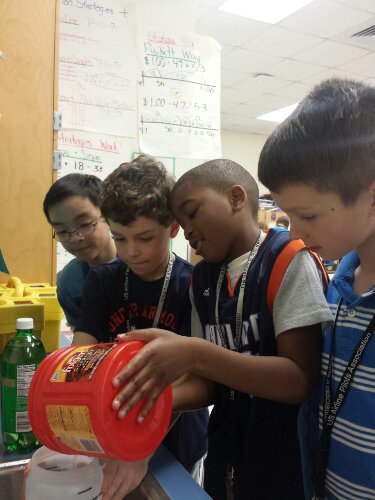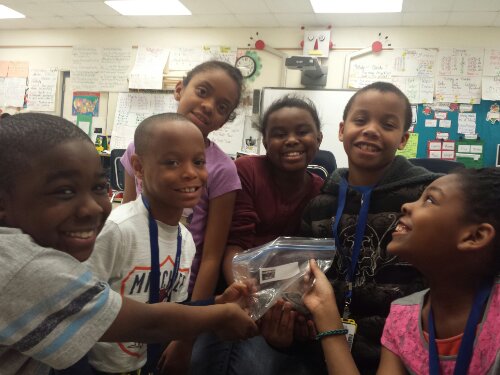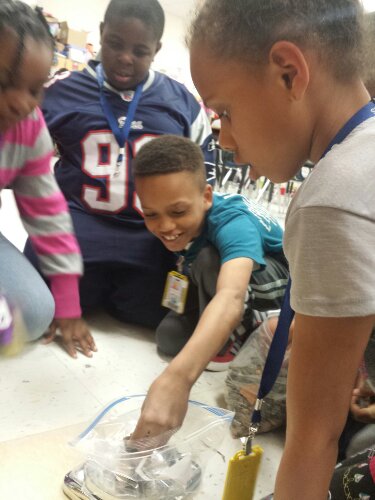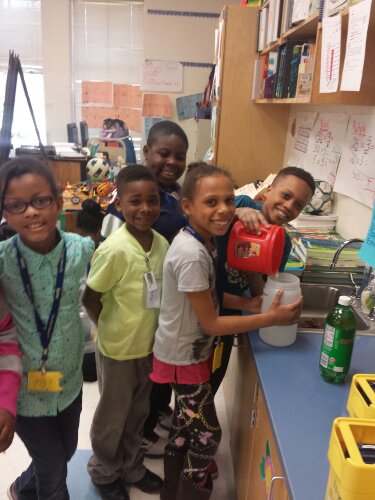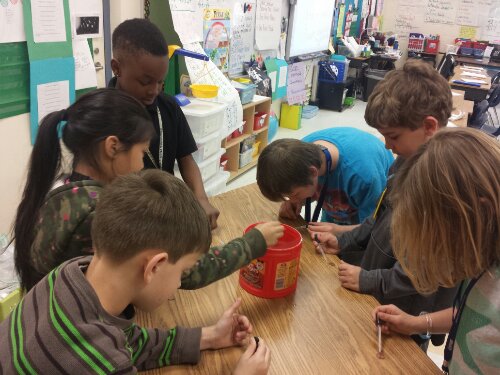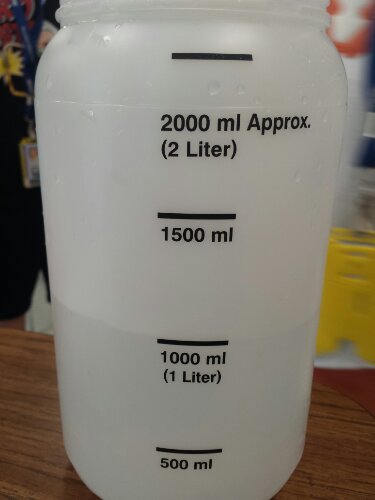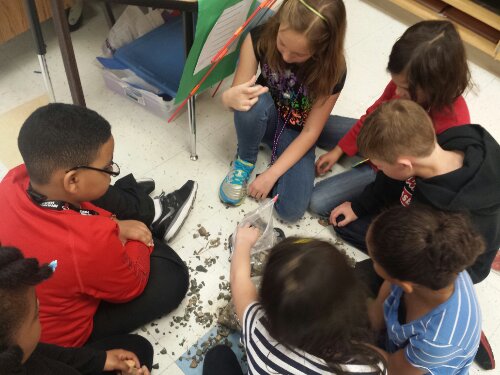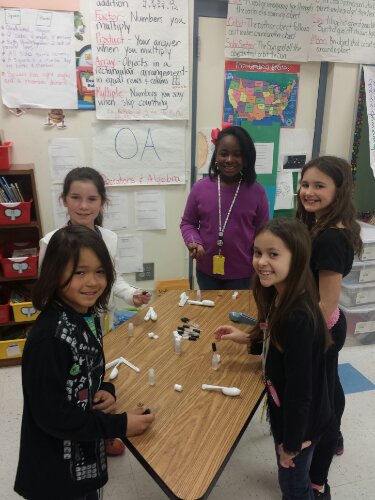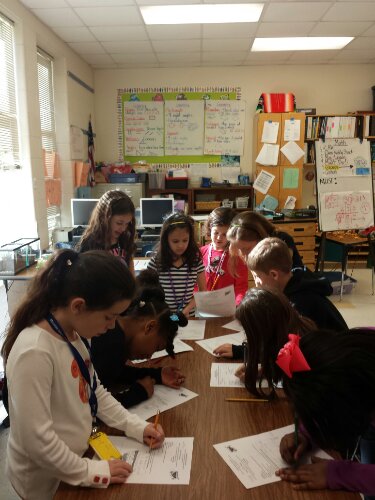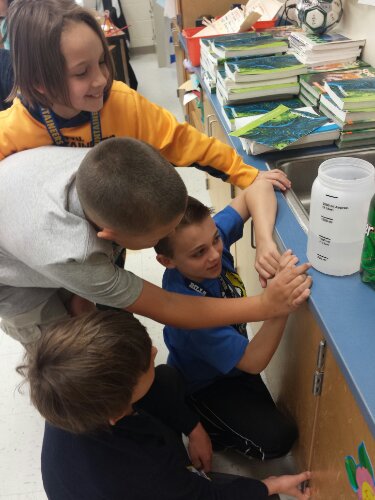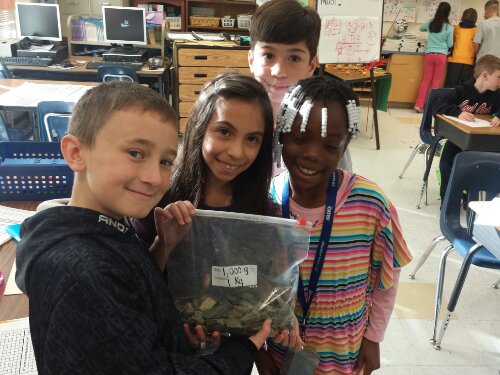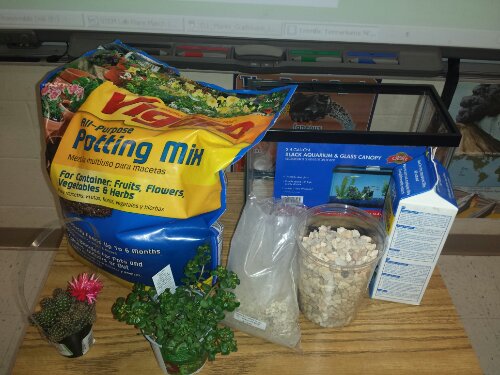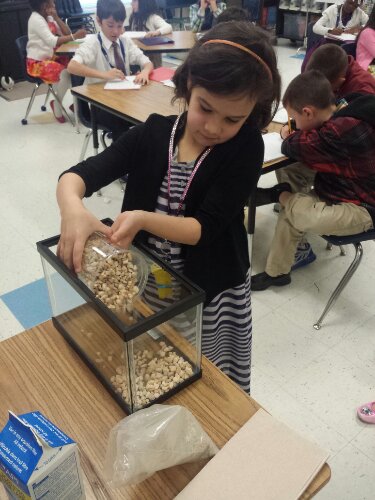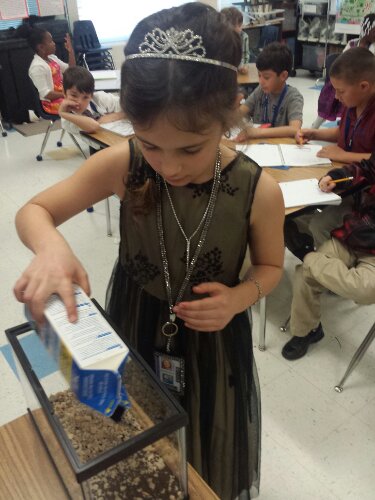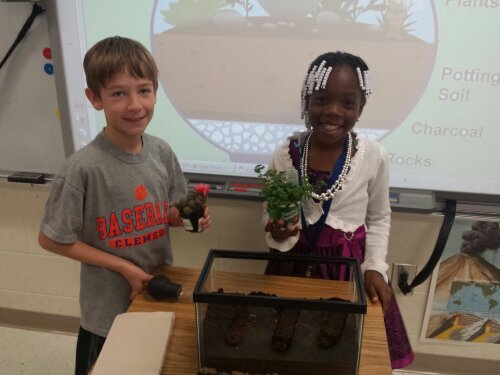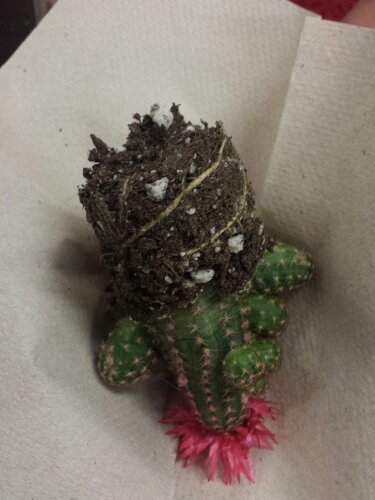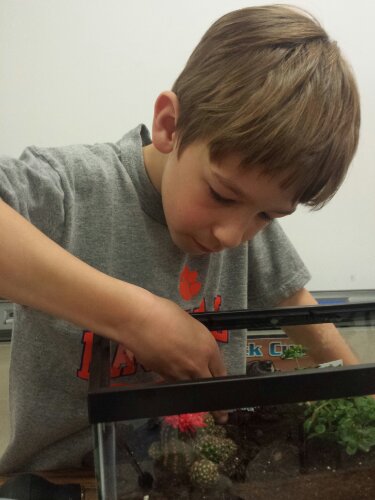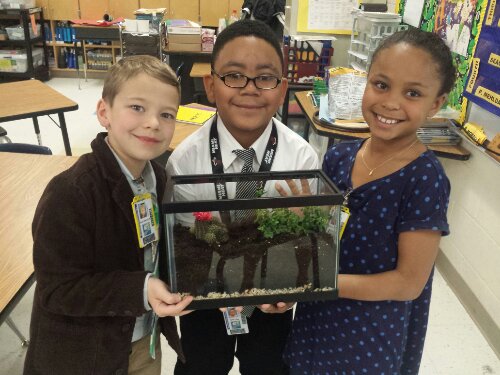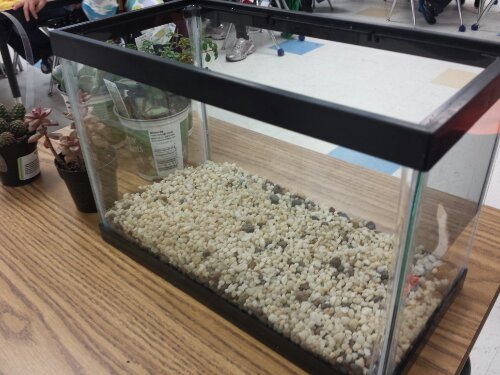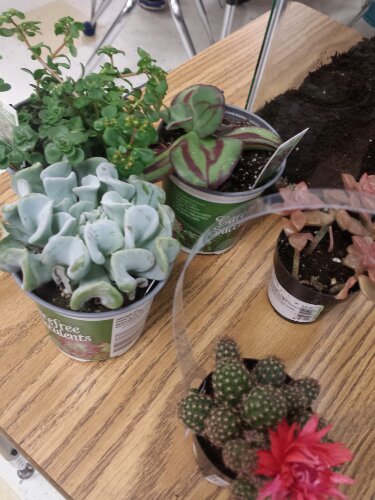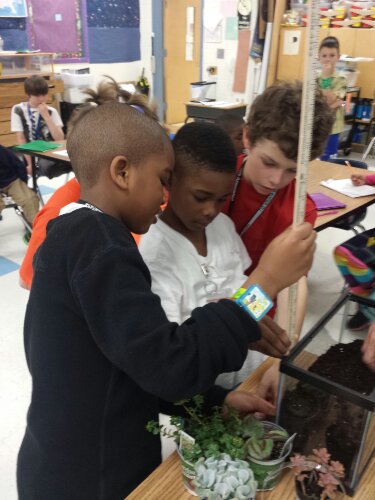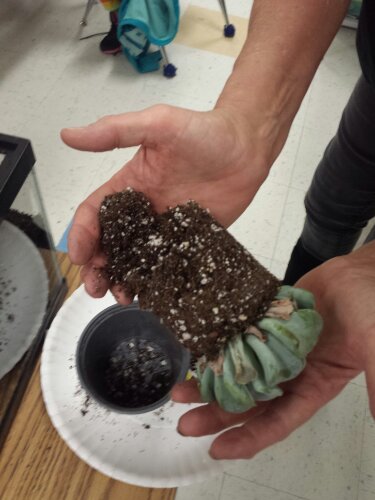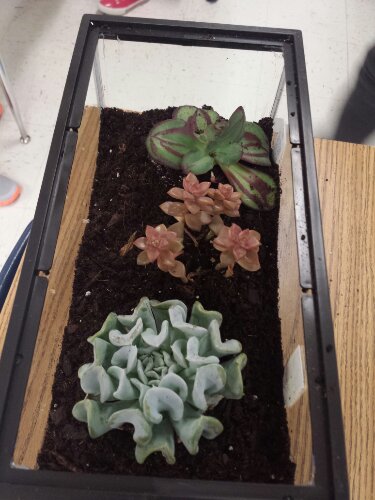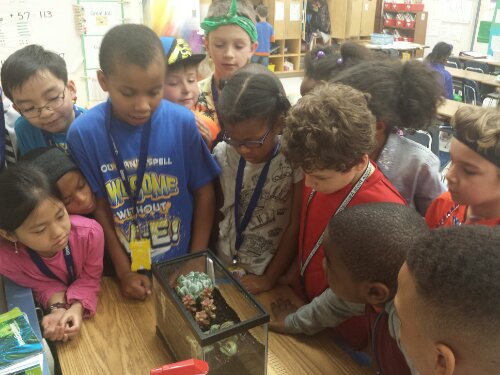Congratulations to the students pictured above! They have never forgotten to bring their homework to school! I am so proud of them!
Monthly Archives: April 2014
Yellow Spring Break
Math Centers #measurement
Students are learning that a gram weighs about the same as a large paperclip. They are learning that a kilogram weighs more than a gram. A large book weighs about a kilogram. Students know that 1,000 grams equals 1 kilogram.
Students are also learning that volume can be measured in milliliters and liters. One milliliter is about 20 drops of water, which is a small amount. An example of 1 liter is a 1 liter bottle of ginger ale. Students were surprised 1 liter bottles can be purchased at the store. They are used to seeing 2 liter bottles. Students know there are 1,000 mL in 1 liter.
Check out some pictures from our centers!
Classroom Terrarium #terrarium
Students had a wonderful time creating two classroom terrariums.
First, we read research about how to make a terrarium. Students learned that there are open and closed terrariums.
Students decided to create an open terrarium first. They read that succulent plants do best in an open terrarium. So, succulent plants were purchased to plant in our classroom terrariums. Then, students noticed the importance of charcoal inside a terrarium. The charcoal helps keep the soil fresh. Students also noticed the need for gravel. Gravel is used to drain any extra water from the soil. We used soil so our plants received the nutrients needed to survive. Once the plants were planted, we water them about once a week and we placed them in front of the window. We are watching our plants grow.
We are also making a closed terrarium so we can see the water cycle. Students were excited to bring home CD cases with seeds inside. This terrarium is one they can care for at home. I also found closed mini terrariums in the dollar section of Target. We will also watch those seeds grow.
Students were shocked to learn about mold terrariums and balloon terrariums. These are closed terrariums. In a balloon terrarium, a seed is placed inside. The balloon is hung in the window. Don’t forget the water! Then students can watch the water cycle and watch the seeds grow.
In a mold terrarium, students place food inside a clear container. The container should never be opened. The food will mold after a few days. Students watch the mold grow on the food.
A habitat terrarium is a lot of fun! After researching an animal, students create a terrarium that resembles the habitat. of the animal. For example, students can create the rain forest.
They also learned that terrariums are connected to both science and literacy. In literacy, students can read a book and create a character terrarium. In a character terrarium, students find items from the setting of a book. They put the items inside an open container. If they have something to represent the character, it can be placed in the terrarium as well.
Math was needed when creating the open terrarium. Students had to measure the amount of gravel, charcoal, and soil. They also had to dig 4 inch holes for the plants.
Students have really enjoyed learning about the different types of terrariums. A special thank you to our science lab teacher, Ms. Weese, for helping us plant our open terrarium.
